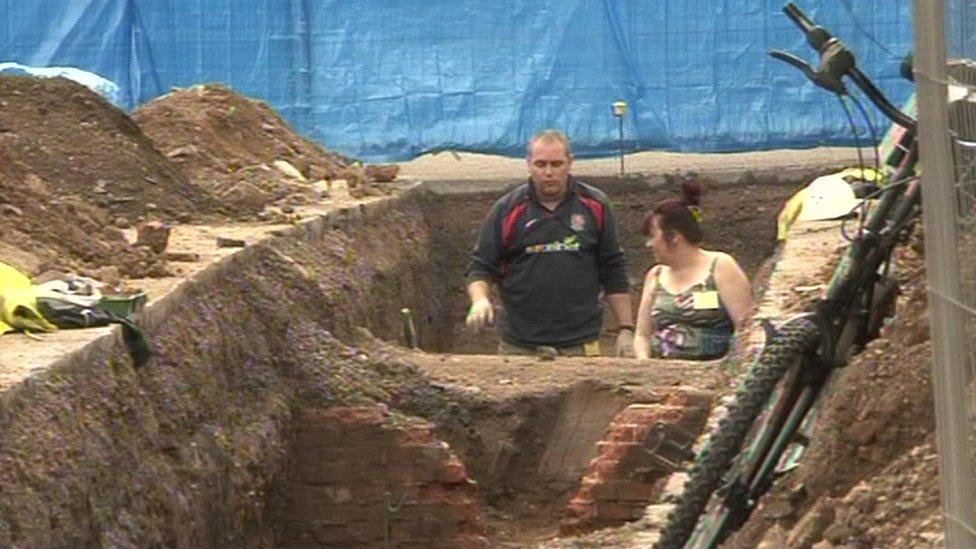'The discovery of Richard III's skeleton changed my life'
- Published
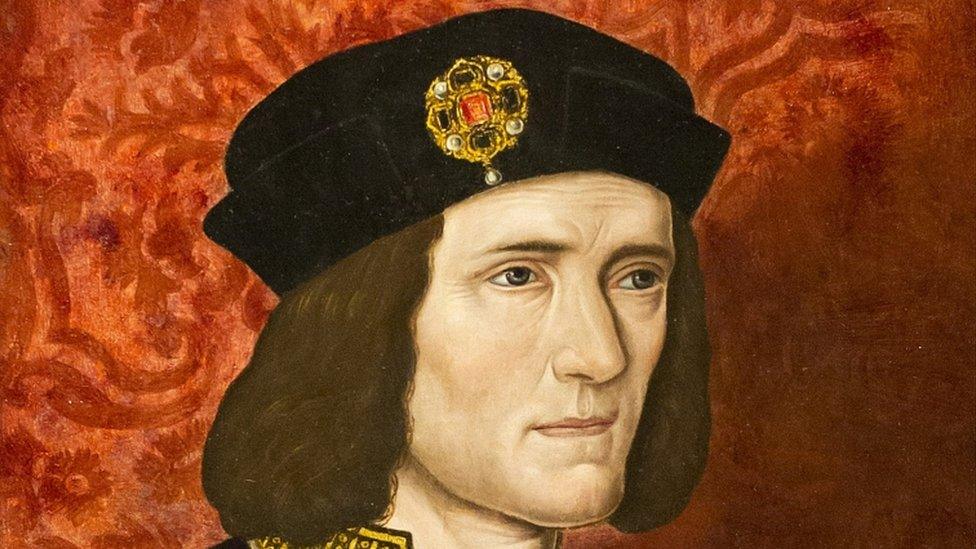
The church where Richard III was buried was demolished in the first half of the 16th Century
Exactly five years ago, archaeologists confirmed that a skeleton found beneath a Leicester car park was that of Richard III. It was an extraordinary revelation that captured imaginations across the world. But for some people, whose fates seemed in some way entwined with the last Plantagenet king's, the discovery of the royal remains would change their lives. These are their stories.
'I felt like I was reliving his last moments'
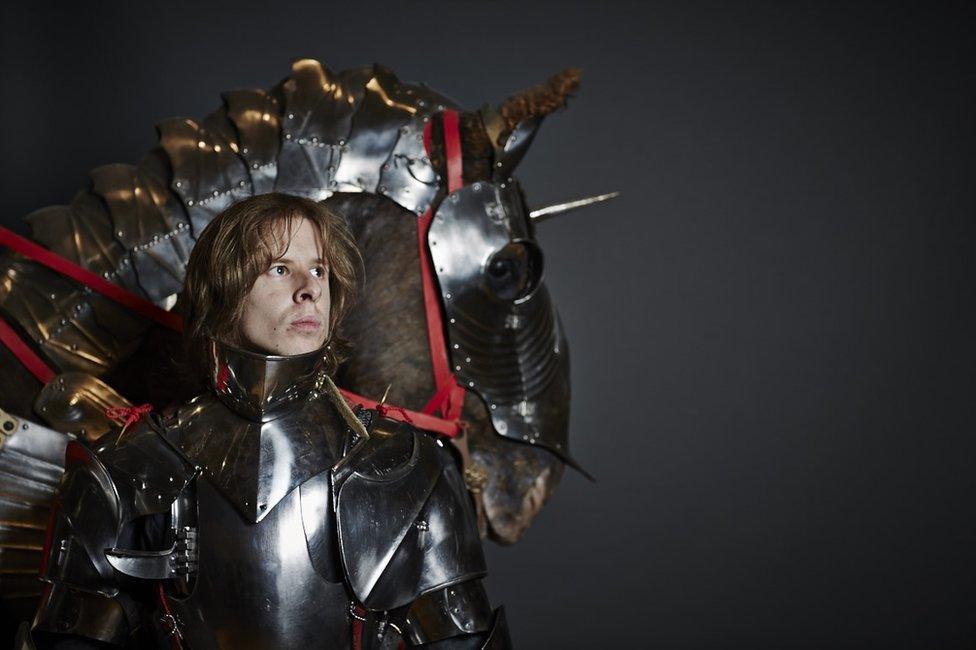
The body double: Dominic Smee has adolescent onset idiopathic thoracic scoliosis - the same type as King Richard
Riding atop a horse in a glistening replica of Richard III's armour, an expression of excitement mixed with sheer terror crossed Dominic Smee's face as he charged at a target and struck it with his lance.
"It was a huge thrill," he remembers.
"Being in control of such a powerful animal and physically making contact with the object in front of me is an experience that you need to have yourself to understand what it truly feels like, but it was quite literally a dream come true."
Reaching this point had been a long journey for Dominic - far longer than the intensive training filmed over four months for a Channel 4 documentary.
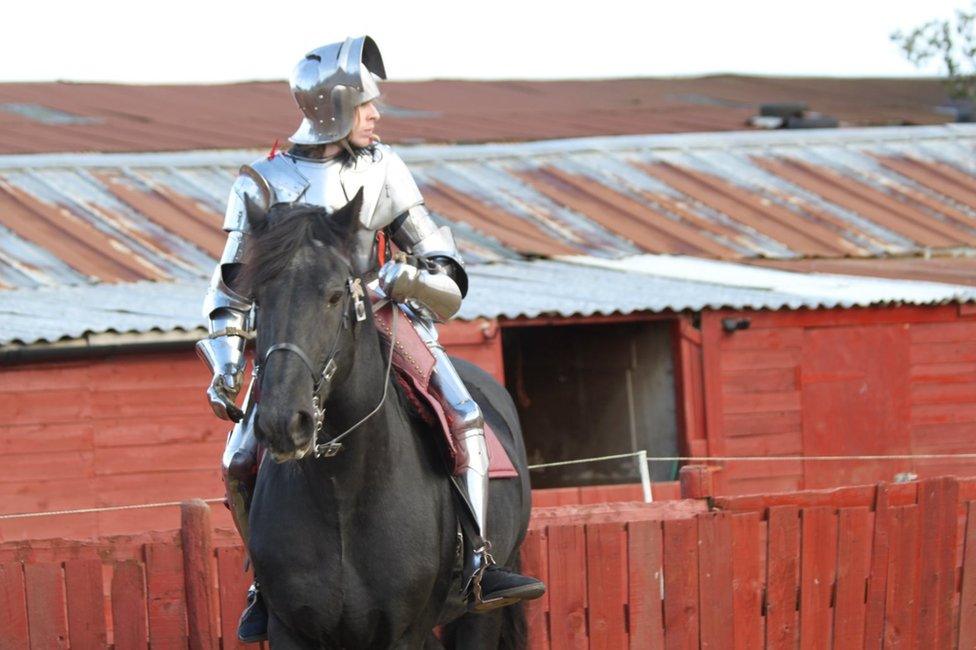
Dominic learnt to ride a horse in battle as part of research for the Richard III project
As a child he was plagued with low self-esteem, and this only became worse when he developed scoliosis - curvature of the spine - as a teenager.
Dominic stopped doing things like swimming as his condition became more prominent. A naturally skinny build anyway, he realised he needed to stay slim as it reduced the strain on his spine.
"For a young guy where masculinity was defined by performance in sports or how muscled you were, this was a very difficult time for me," explains Dominic, now 30, from Staffordshire.
"I didn't think girls would like me because of who I was, and the idea that my condition didn't define me or my potential in life was foreign to me."
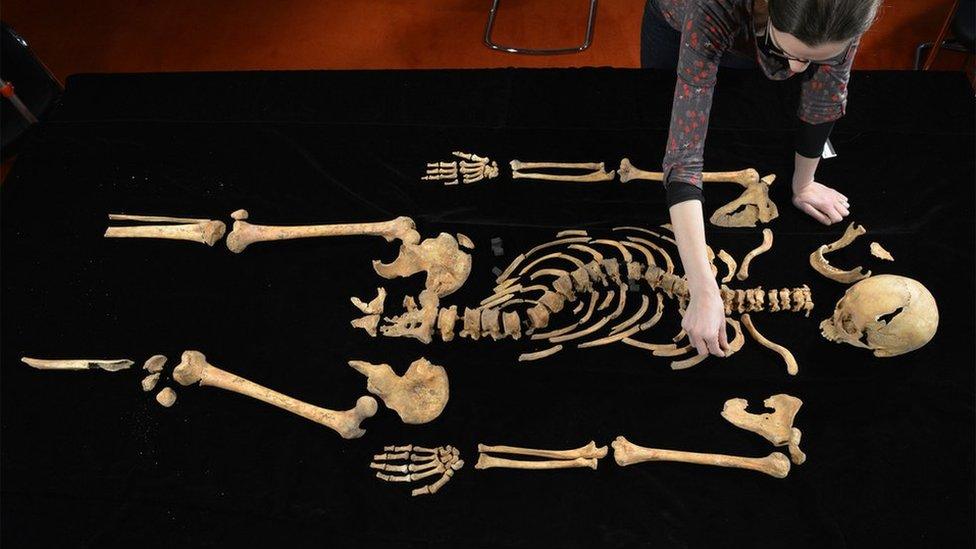
Richard III's spine was curved in almost exactly the same way as Dominic's
Like millions of other people, he had followed the story of the car park king with amazement. However, it became eerily poignant for Dominic when he realised their spines were curved in almost exactly the same way.
In another coincidence, Dominic was part of a living history group based at the battlefield where Richard III was killed. A member of the group shared an online lecture exploring how the king might have fought in armour, so Dominic emailed the lecturer offering to help with his research. Their work together became the focus of the documentary Richard III: The New Evidence, external.
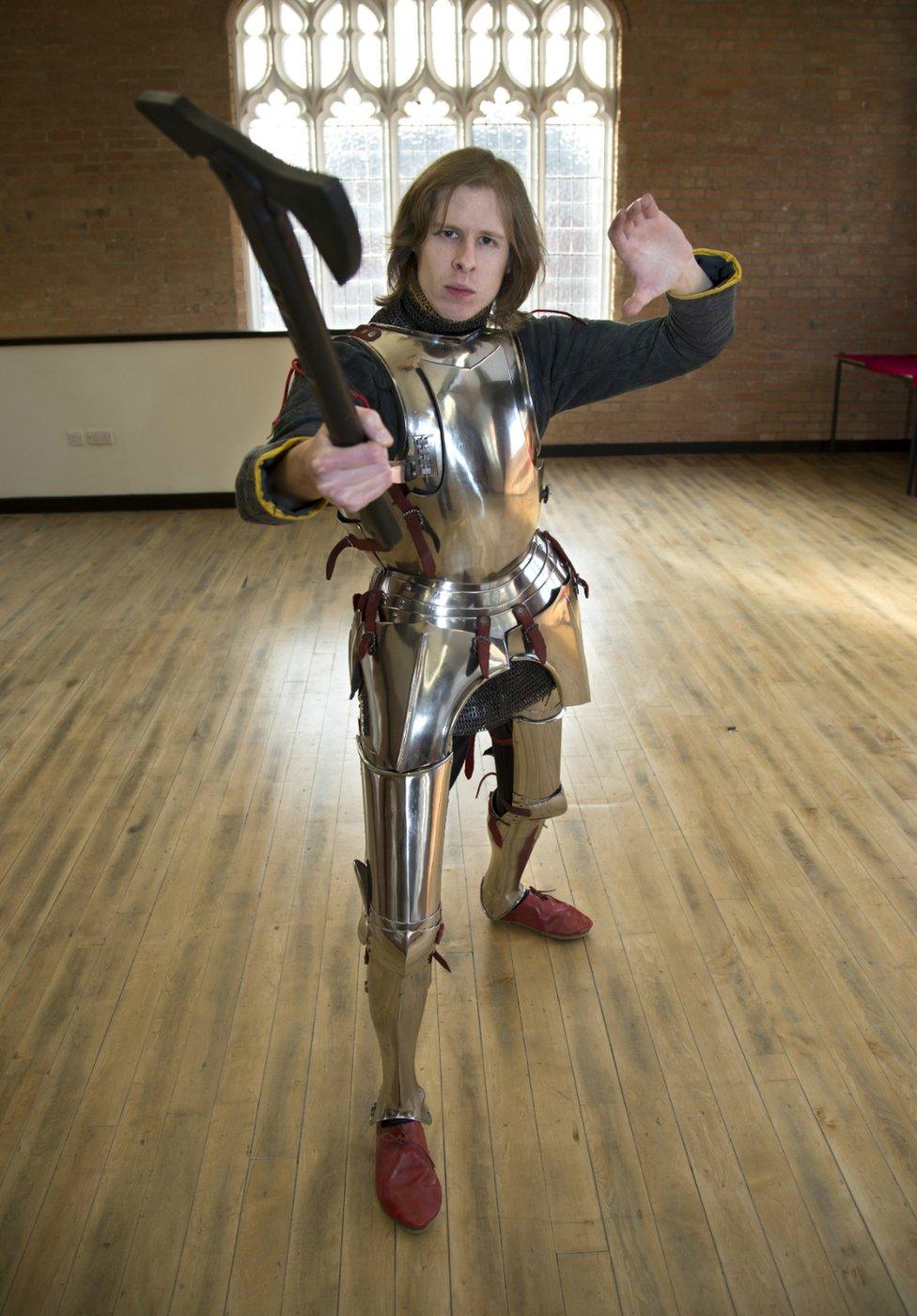
Dominic had 32 hours of foot combat training and 40 hours of riding training
"The original plan was for me to have a go and see how I fared at some of King Richard's knightly training," says Dominic.
He was put through 32 hours of foot combat training and 40 hours of riding training, and picked it all up so quickly he could be filmed playing Richard during his final moments, with no need for a stunt double.
"It was during this moment that the world swam and I really did feel like I was reliving his potential last moments," he remembers.
"The whole experience was both physically and mentally exhausting - there were bruises, muscular aches and pains and a fair amount of self-doubt from start to finish, but I'd happily go through it all over again."
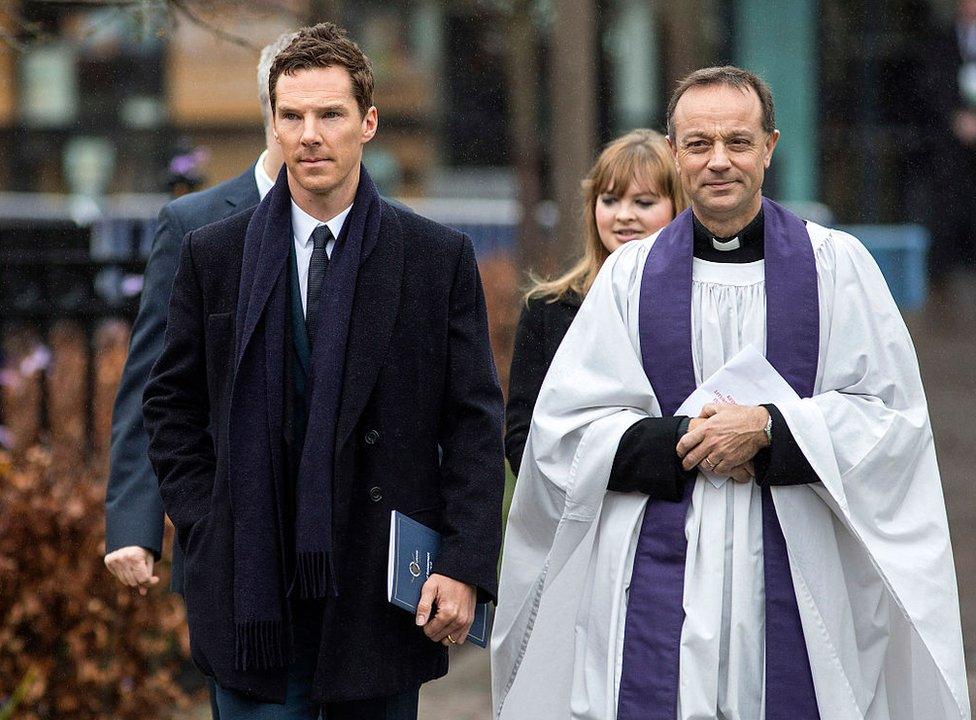
He said it was an "incredible experience" when Benedict Cumberbatch recognised him
Dominic said he was treated like a celebrity after the documentary aired, even being recognised by actor Benedict Cumberbatch - a distant relative of Richard III - during the week of the king's reinterment at Leicester Cathedral.
"That was an incredible experience, an A-lister wanting to meet me," he says.
However, the positive effects have been far longer-lasting. The boy who hated standing up in front of the class at school became an adult who is now confident enough to give lectures about his experiences and the research.
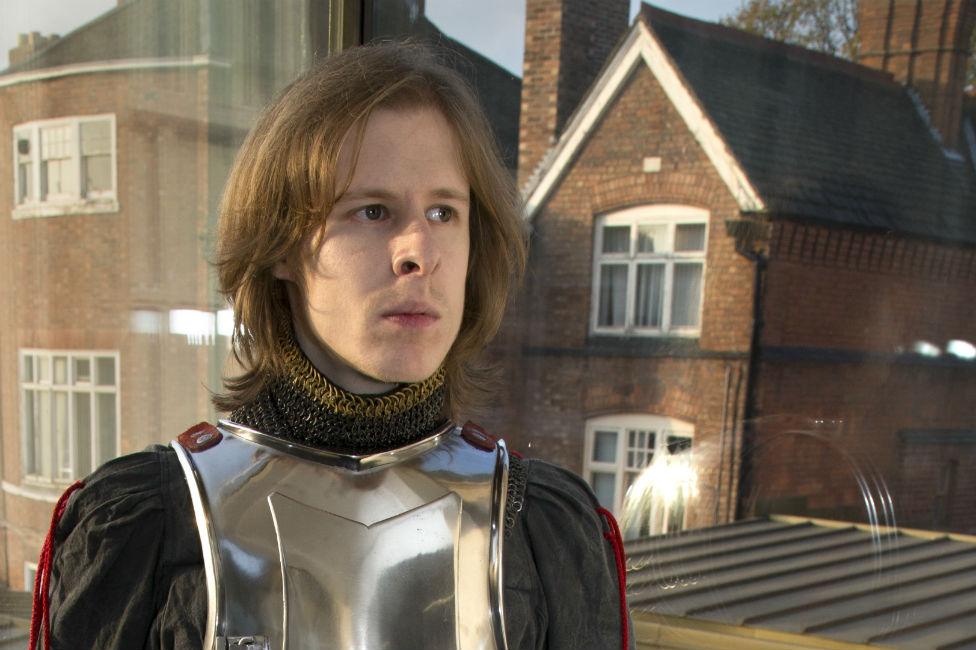
Dominic Smee now sees his scoliosis as "part of what makes me, me"
"The way other people accepted me for who I was changed my outlook, and I think all that started when I took my top off in front of a room of total strangers at the beginning of filming," he says.
"I realised that not all people would judge and condemn me for opening up about who I was inside.
"In fact, I got a lot of respect from people there because of how brave I was."
'We all treated it as a joke'
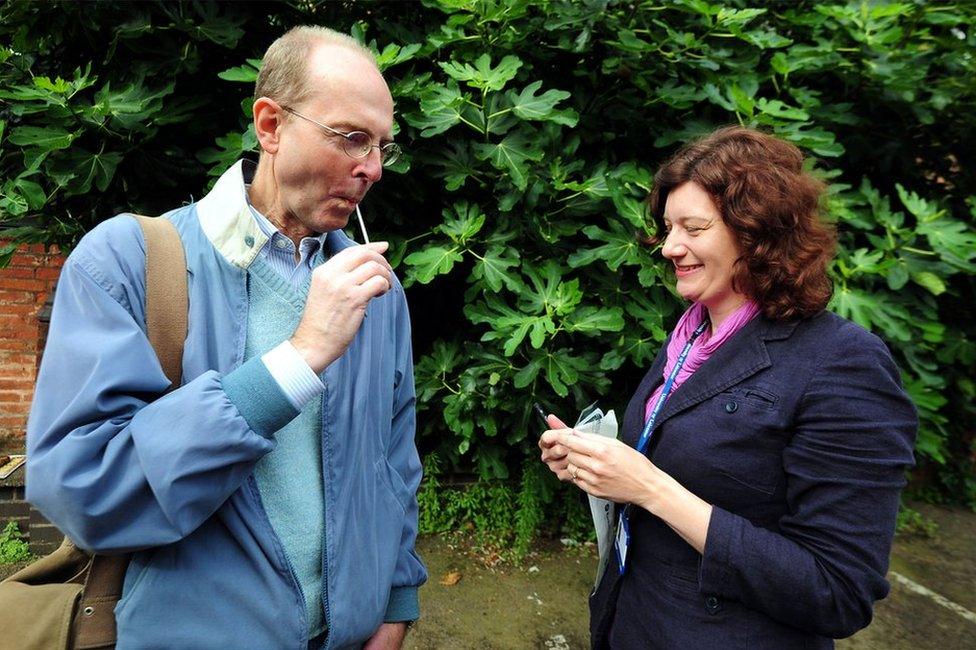
The relative: Michael Ibsen gave his DNA sample the day before digging began
Giving a DNA sample while standing in a car park in August 2012, Michael Ibsen would never have predicted the bizarre turn of events that was about to unfold.
A cabinet-maker by trade, he is a descendant of Richard III's sister Anne and had been invited along to represent the family as the archaeological search for the king's remains began.
"No-one thought they were going to find Richard III," he says.
"On that day I remember Turi King took a DNA sample in the car park.
"We all treated it as a joke because we all thought it wouldn't be needed."
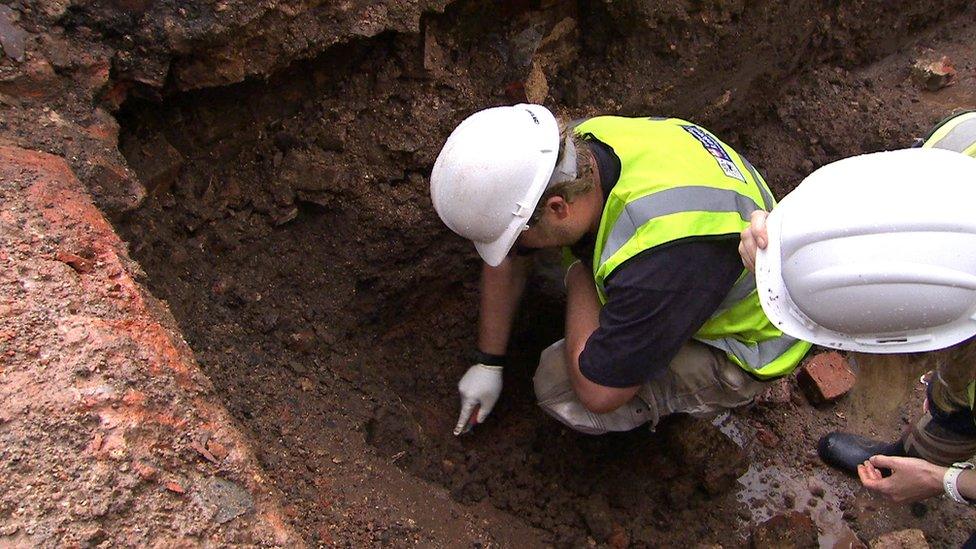
Archaeologist Mathew Morris found a human left leg bone at the edge of trench one on the first day of the dig at the Greyfriars site
But within hours of work starting, human bones were found.
"I find the whole thing really shocking in a way," Michael says.
"What was the likelihood of them finding him? It's almost beyond belief."

The cabinet-maker was asked to make Richard's coffin, but has received only one other related commission - bookcases for a man with a collection of volumes about Richard III and the Wars of the Roses
Michael's DNA sample eventually proved to be vital in confirming the remains were King Richard's "beyond reasonable doubt".
"During the process of confirming the remains were those of Richard III it was a bit of a media scrum that went on and off over a period of a year or two before he was finally reburied," remembers Michael.
He would be recognised whenever he went to Leicester. Even in London, where he lives, he was approached a few times while doing his shopping.

Michael Ibsen placing a rose on Richard III's coffin during a service in Leicester
"I couldn't really go out in public for a period of several days, so it gave me a feeling of what it must be like for members of boy bands with screaming women following them around," Michael says.
"There were a fair few requests for autographs."
'I had to be careful what I said'
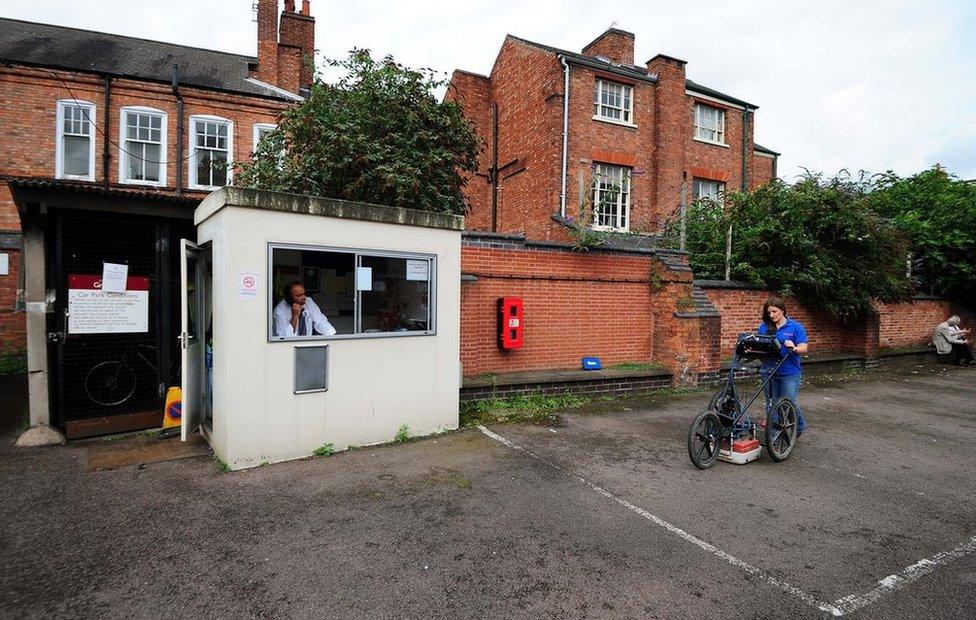
The car park attendant: Mike Mistry was unexpectedly thrust into the spotlight
As a car park attendant for Leicester City Council for more than 15 years, Mike Mistry had come into contact with many people, but had never experienced anything even approaching the limelight.
But that changed when his car park became arguably the most famous in the world.
Mike was pictured peering from his cabin as archaeologists began to march around his car park, painting lines and pushing surveying equipment.
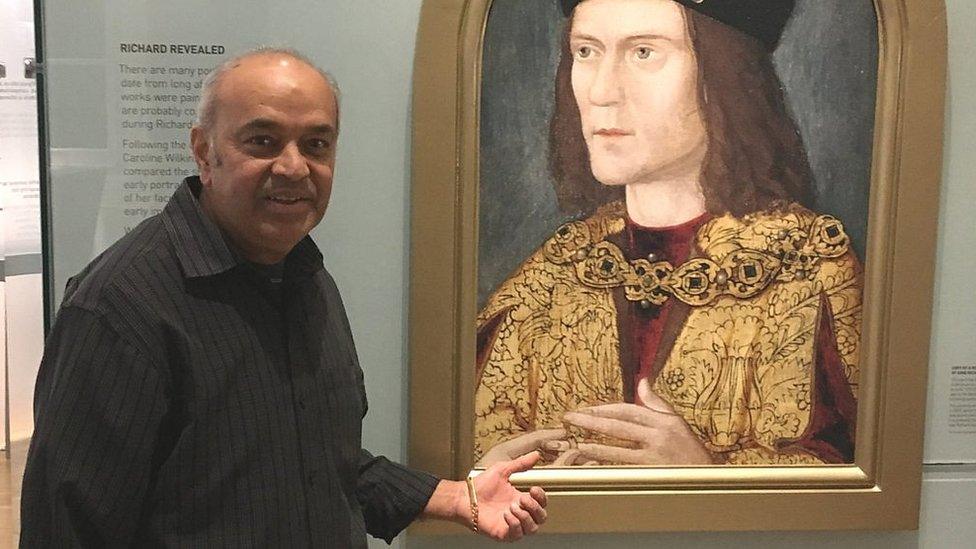
Mike worked above the king's grave for more than 15 years
"(The archaeologists) had come a year before but I don't think they had the money to do it," he says.
"I didn't know much about Richard III at the time, the battles and things, so I got them to tell me all about it.
"This time though they were very excited. I was excited because I felt sure they would find something."
And they were right. Mike had a ringside seat to one of the greatest archaeological discoveries of the modern era.
"I came to work and there was something happening," Mike recalls. "I got called over and they showed me the hole they had dug.
"They said they had found some bones and I was told not to take any photos or tell anyone."
Mike had also unwittingly contributed to the mythology surrounding the discovery - he painted the large "R" on the parking bay below which the king was found.
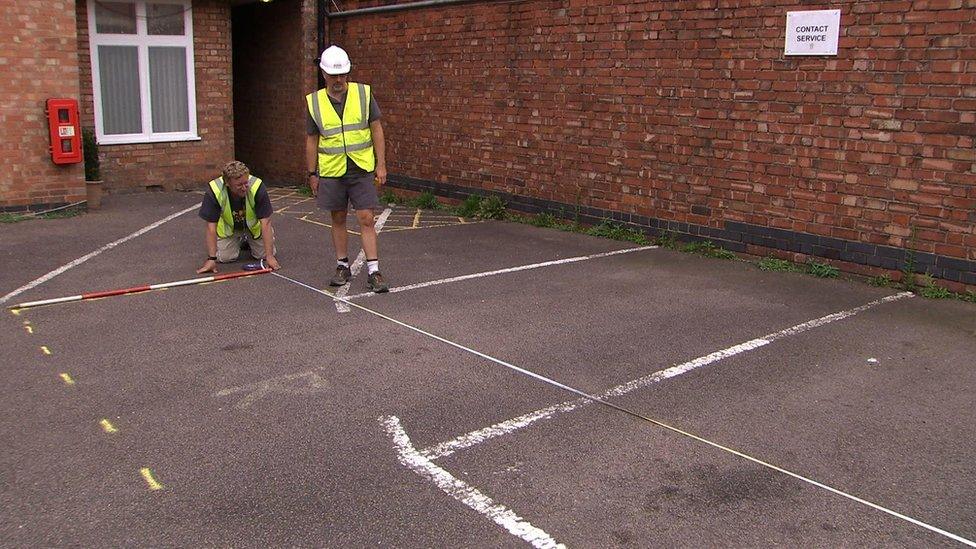
King Richard III's remains were discovered under a spot in a Leicester City Council staff car park that had been marked with an "R" by Mike
"It was a reserved space and I didn't want people to park there," he says.
"One day a builder was working so I borrowed some white paint and put the 'R' there."
And while there were fewer spaces for cars after the dig, there were many more visitors to keep him busy.
"They came from Germany and Australia and America. I had to be careful what I said but I told them what I could and they seemed to be pleased to talk to the man who looked after Richard's car park."
Unfortunately, Mike was made redundant in 2016 and has yet to find another attendant's job.
"I really enjoyed meeting people from all over the world who came to see my car park, and talking to them. I miss it.
"I still go along to the car park and the visitor centre - even to the cathedral where he is buried - and I tell people he was found in my car park. I looked after him for a while."
'My road to Damascus event'

The musician: The career of Ian Churchward (left) has been reshaped as a result of the discovery of Richard's remains
"It just blew my mind", recalls Ian Churchward about a documentary he watched on the discovery of Richard III's remains. "I couldn't get over the emotion.
"This was my road to Damascus event and a song I had been struggling with became The House of York, my first Ricardian song."
Music had been a "hobby" for Ian, but the discovery of Richard III led to its becoming an all-consuming passion.
His Devon-based folk-rock band, The Legendary Ten Seconds, external, was sent in a new direction.
Sample of a Richard III folk-rock concept album
"The first track got good feedback, so we did an entire album and that went down well.
"Now we have five Richard III albums, with a sixth coming together," he said.
The albums feature songs with titles like Shining Knight, Battle in the Mist and Richard Liveth Yet, and even include a Ricardian Christmas song - Golden Angels.
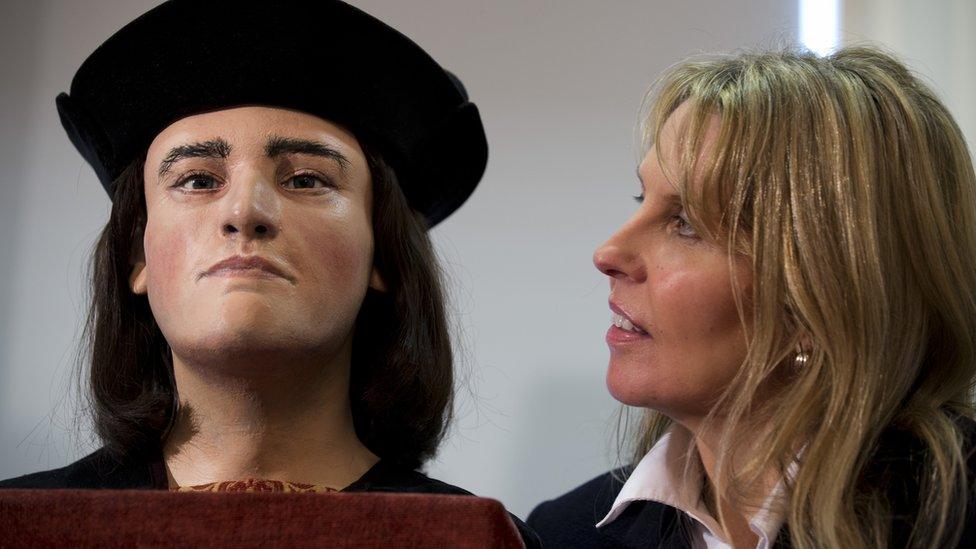
Ian has also joined forces with Philippa Langley - pictured here next to a facial reconstruction of Richard - whose determination led to the discovery of the lost king
"But we wanted to go beyond just separate songs, so we produced a Richard III concept album called Tant Le Desiree, from one of his mottos [meaning 'I have longed for it so much'].
"It's a bit like a medieval version of Jeff Wayne's War of the Worlds, with a series of musical pieces linked by narration in the guise of Richard's mother, Cecily Neville."
The band have been invited to play festivals, battlefields and even to fly out for a gig in front the US branch of the Richard III Society.
Ian admits that before the inspiration Richard provided, his music did not get much attention.
"We got a play on the John Peel show, but that was it.
"But Richard seems to have really tapped into something, There are so many stories to tell."
Related topics
- Published4 February 2013
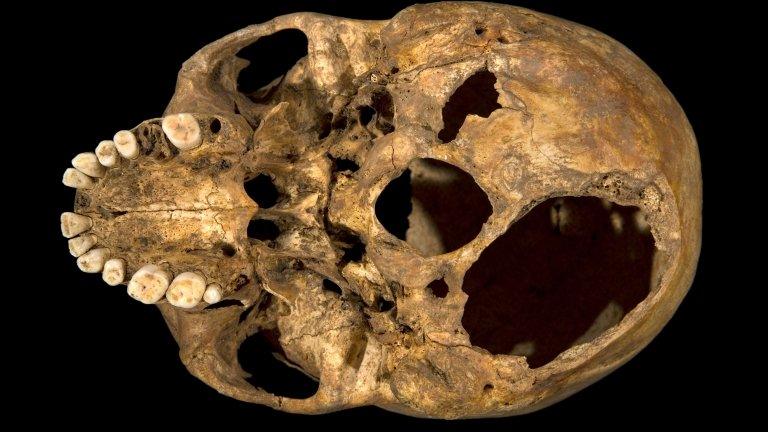
- Published12 September 2012
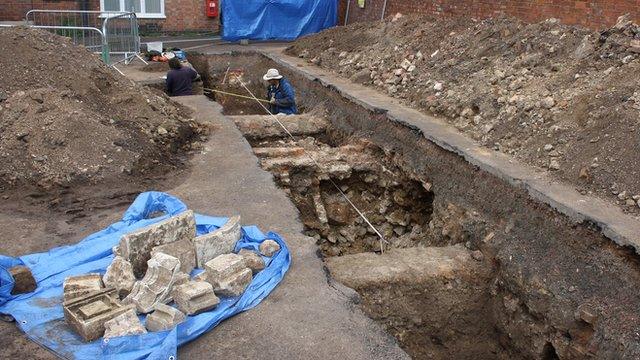
- Published12 September 2012
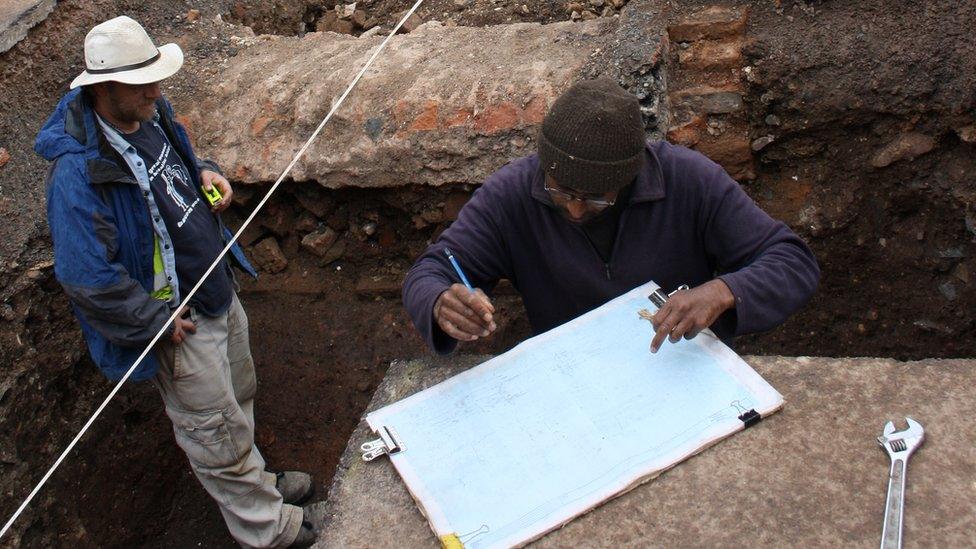
- Published8 September 2012
